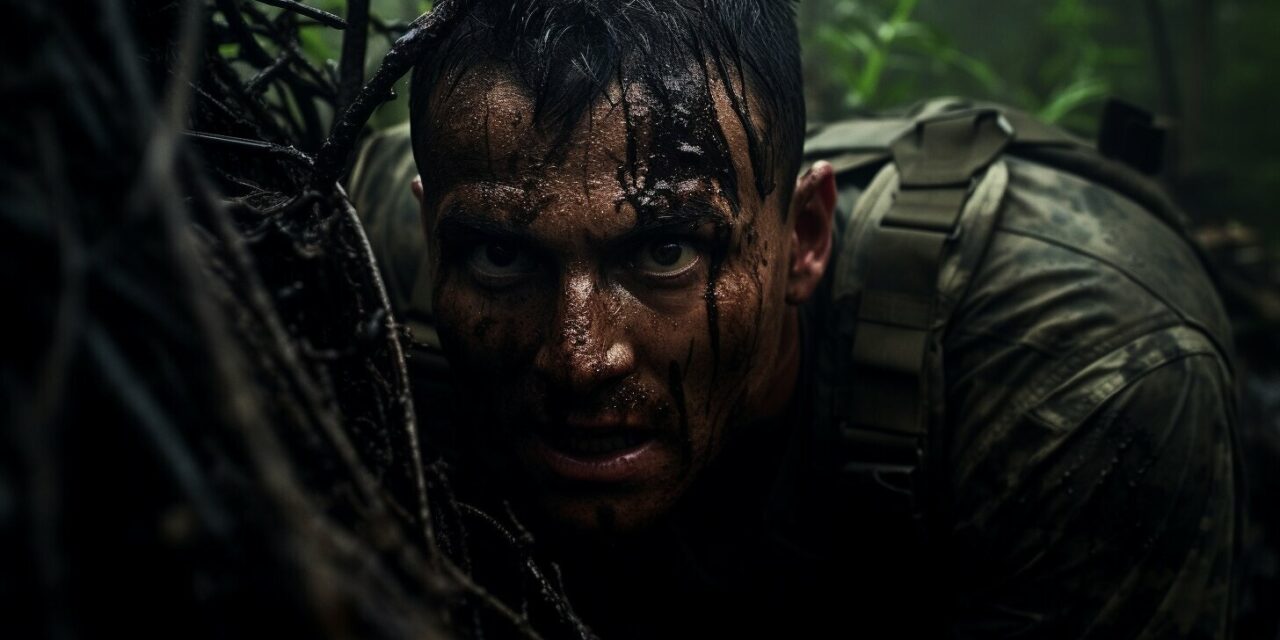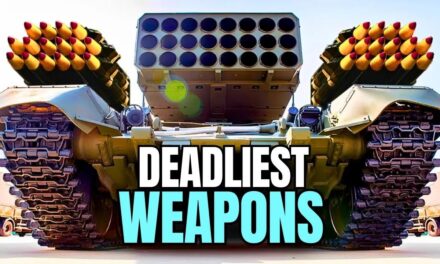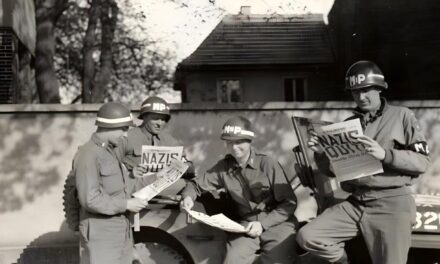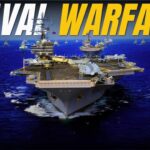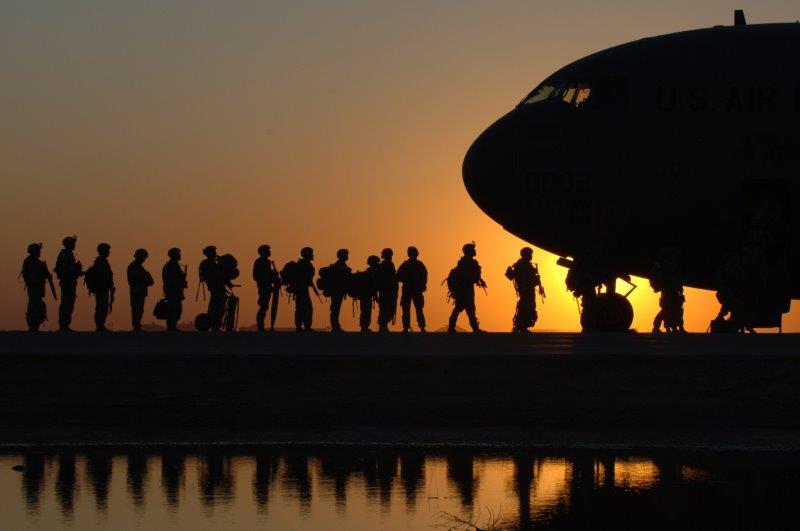The Vietnam War was a bloody and brutal conflict that cost many lives on all sides. Among the most tragic events was the loss of a 14-man Marine patrol that was ambushed and wiped out by Viet Cong forces near Da Nang in May 1966. This blog tells the story of that ill-fated patrol, known as The Lost Patrol US military history's most heartbreaking tale, and examines its lasting impact on the Marines and their fight in Vietnam.
Key Takeaways:
- On May 12, 1966, a 14-man Marine patrol was ambushed and wiped out by Viet Cong forces near Da Nang, Vietnam.
- Despite search efforts and reinforcements, 12 patrol members were killed. Only 2 survived the ambush.
- The loss was devastating for the Marines who had arrived in Vietnam just a year earlier.
- Awards were given for bravery and memorials created, but the deaths weighed heavily on the battalion.
- The tragic battle likely strengthened the Marines' resolve to gain victory in Vietnam.
Patrol Goes Missing in the Arizona Territory
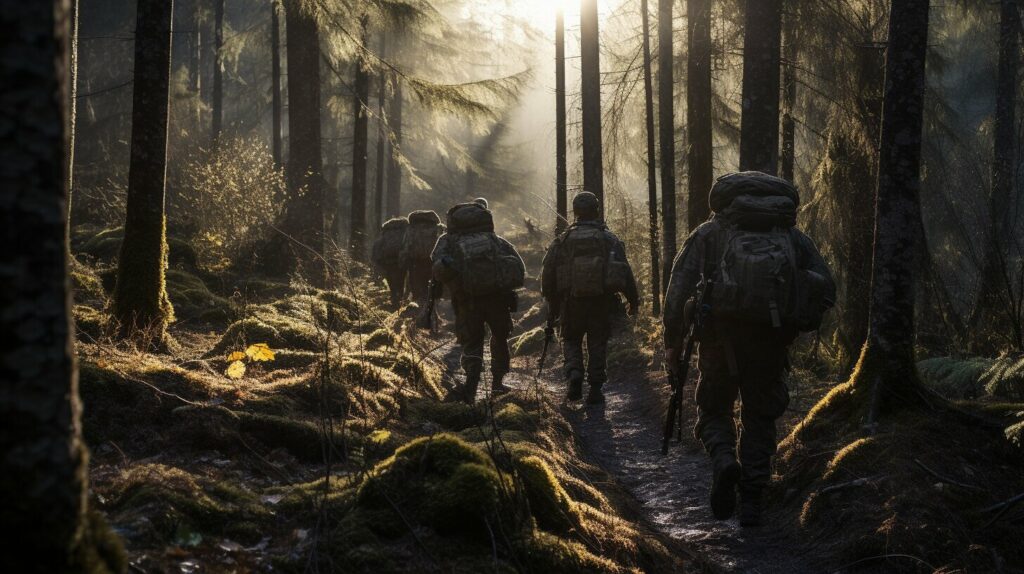
In the early morning hours of May 12, 1966, a routine patrol left the Marine encampment near the village of Bao Tran, located about 15 miles southwest of Da Nang in central Vietnam. This 14-man reinforced squad from Bravo Company, 1st Battalion, 9th Marine Regiment was embarking on a security patrol east of the Vu Gia River and into an area the Marines called the Arizona Territory.
The Arizona Territory was known for its treacherous terrain and fierce skirmishes with the Viet Cong. It had seen bloody fighting ever since the Marines first arrived in Vietnam back in March 1965. The sandy soil, sparse vegetation, and irrigation ditches reminded the Marines of America's southwestern badlands, hence the name Arizona Territory.
Marines Arrive in Da Nang
Just over a year earlier, on March 8, 1965, the first American combat troops came ashore at Da Nang Air Base. Battalions from the 9th Marine Expeditionary Brigade, part of the 3rd Marine Division, were deployed to help defend the airbase from Viet Cong attacks.
The role of the Marines was initially limited to defense of the base. But as the Viet Cong threat increased, they started patrolling and conducting offensive operations in the surrounding area.
The Lost Patrol Sets Out
On the morning of May 12, 1966, the 14-man squad designated as BP10 left the Bravo Company perimeter to begin their patrol. Known as a "lost patrol," they were headed northeast into the Arizona Territory and toward a village called Do Nam.
A Viet Cong battalion was reported to have recently moved into the Do Nam area, so BP10 was tasked with investigating and engaging any enemies. The patrol was led by Sergeant Dallas Young.
Communications End With the Patrol
About an hour after setting out, BP10 approached a village and came under small arms fire from the east. They returned fire, then continued towards the enemy position.
Later, Sgt. Young radioed Bravo Company commanding officer Captain Norman Henry that they had apprehended a suspected Viet Cong. Young said they were moving towards a tree line to check out more communist soldiers (Viet Cong) they spotted.
That was the last communication received from BP10. When radio contact ended around 9am, the Marines became fearful that the patrol had walked into an ambush.
Search Efforts For The Lost Patrol Met With Enemy Fire
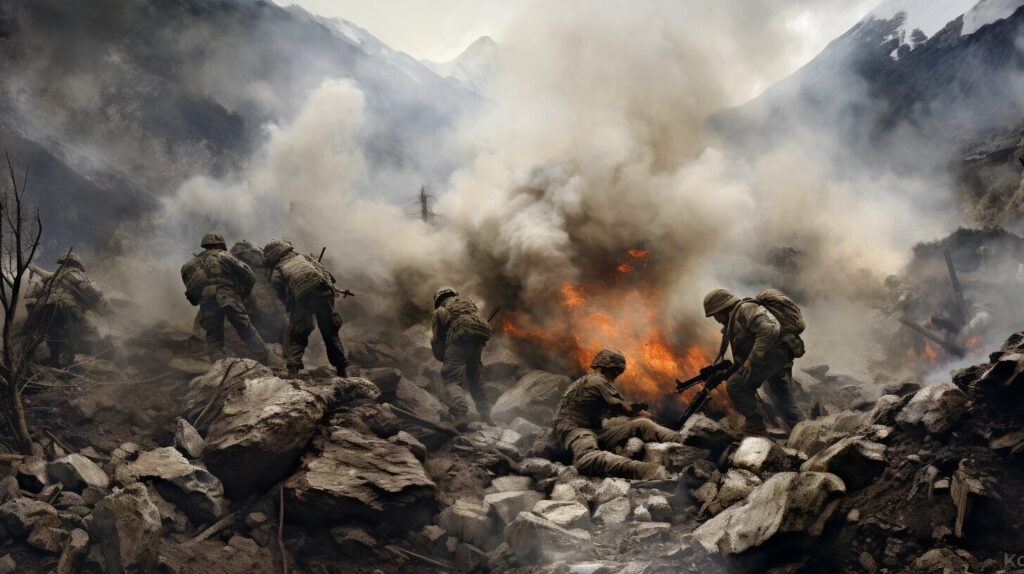
Upon losing touch with BP10, Capt. Henry dispatched a reaction squad from 1st Platoon to find the missing patrol. As they moved east, this second unit attempted to regain radio contact but were soon met with trouble of their own.
Reaction Squad Sent to Find the Missing Patrol
The reaction squad, led by Staff Sgt. Earl Davis, was passing through a village when they came under heavy small arms and mortar attack. Davis called for support from Bravo's mortar section.
Did you know: The quick actions of warrant officer Don Meadley in launching precisely aimed smoke grenades directly saved the Marine squad from walking into a deadly Viet Cong trap just 75-80 yards away? The pilot who saved the Marine squad by dropping warning smoke grenades remained unknown to them for over 50 years until finally being identified through research and reunited in 2017.
Pinned Down by Viet Cong Forces
The reaction force received accurate mortar fire to suppress the Viet Cong attack. This allowed them to advance toward the enemy position. However, soon after they began receiving sniper fire.
As they moved closer to the area where BP10 was believed to be, the reaction squad encountered intense small arms and grenade explosions. They realized a much larger Viet Cong force had ambushed the lost patrol.
Reinforcements Arrive But Take Casualties
Captain Henry sent the bulk of Bravo Company to assist the embattled reaction squad. As they attacked towards the Viet Cong, Bravo Company also met with heavy resistance.
The company took casualties, including the death of Lt. Bruce Capel, who was hit by enemy fire while maneuvering his 1st Platoon. Despite aggressive attacks supported by air strikes, Bravo Company was unable to break through and rescue BP10.
Recovering the Bodies of the Fallen
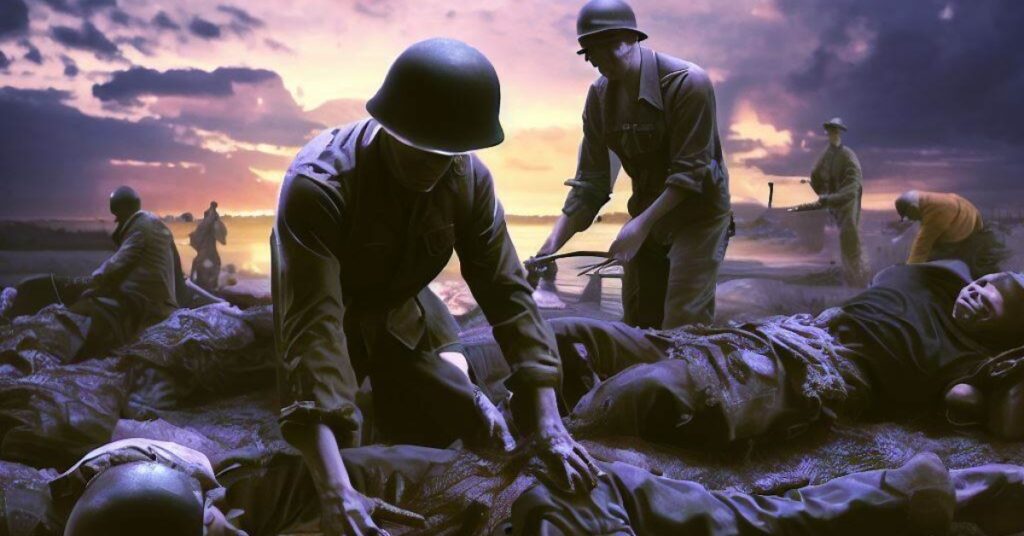
It wasn't until the following day that the Marines were able to recover their dead and piece together the tragic story of what befell the lost patrol.
Two Surviving Marines Tell the Tragic Story
On the afternoon of May 12, two wounded members of BP10 - Pfc. James Binkley and Pfc. Reuben Morales - were spotted by the reaction squad and rescued. They informed Capt. Henry that the other 12 patrol members had been killed in the ambush.
Morales and Binkley recalled how the patrol walked into an ambush and was overwhelmed by Viet Cong forces. Their squad leader, Sgt. Young, was killed in the initial moments of the attack, cutting them off from the chain of command.
Did you know: The two surviving Marines from the lost patrol played dead for over 3 hours amidst 100+ degree heat before managing to crawl away under fire once Marine artillery forced the Viet Cong to temporarily retreat.
The two Marines played dead for hours until a bombardment of Marine mortars forced the Viet Cong to retreat temporarily. Morales and Binkley were able to escape through a barrage of machine gun fire from Bravo Company.
Continued Fighting to Reach the Ambush Site
For the rest of May 12 and into May 13, Bravo Company continued fighting to reach the site where BP10 had been ambushed. More air strikes and artillery barrages were called in to weaken the Viet Cong forces.
Captain Henry also consolidated the reaction squad and other Marine units into a defended position for the night. They formed a 360-degree perimeter and prepared for further attacks.
Finding and Retrieving the 12 Dead Marines
On the morning of May 13, the Marines at last moved into the area where BP10 was ambushed. Inside two destroyed Viet Cong trench lines they found the bodies of the 12 patrol members killed in action.
It was apparent from the scene that the men had fought valiantly. Many bodies were discovered amid empty shell casings and depleted magazines. The machine gunner, Lance Cpl. Edgardo Caceres, was found dead atop his weapon after expending all ammunition.
Casualty: The Aftermath of a Devastating Day
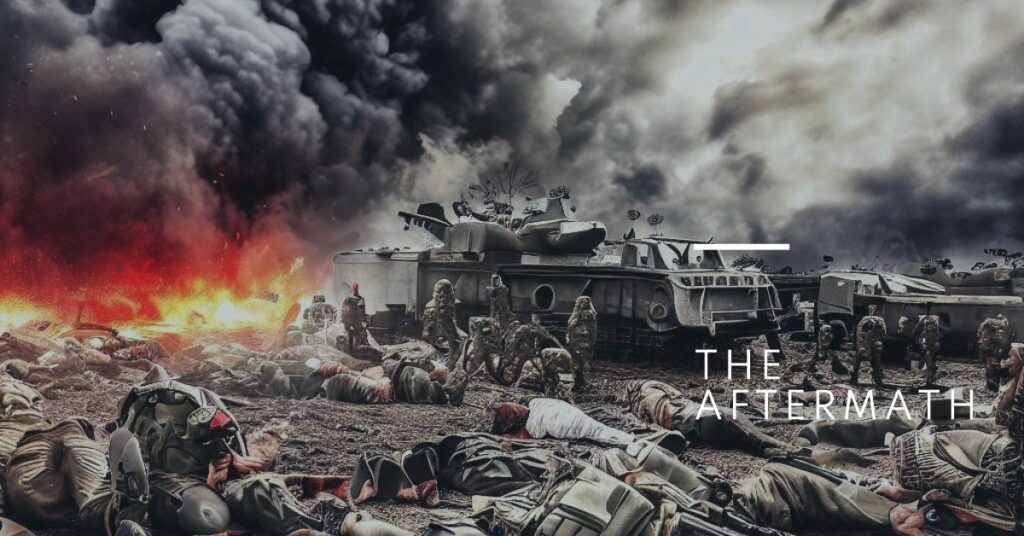
The battle on May 12-13 produced heavy casualties for both sides. Bravo Company lost 13 men killed and many more wounded. But the Marines estimated nearly 175 Viet Cong were killed during the two-day fight.
High Casualties on Both Sides
The shattered remains of BP10 were recovered and sent home for burial. Bravo Company mourned the loss of their fellow Marines. Killed along with the 12 lost patrol members was Lt. Bruce Capel, who fell during the rescue effort on May 12.
The Viet Cong proved they were capable of mounting large-scale ambushes and going toe-to-toe with American forces. But their R-20 Battalion suffered horrible losses in the Arizona Territory battle.
Awards and Remembrances for the Lost Patrol
Several Marines earned medals and commendations for their heroism during the battle, including Silver Stars for Sergeant Davis and Corporal Caceres (posthumously). The sacrifice of BP10 would never be forgotten.
Did You Know: Sergeant Davis said it appeared that a dying Corporal Caceres had made sure the enemy could not use his M60 machine gun to kill other Marines. He had placed a grenade in the breech and lay on top of the gun after pulling the pin.
Each year on May 12, the battalion holds a Long Lost Patrol ceremony to honor their memory. Members of BP10 are considered the first lost patrol in Vietnam to be completely wiped out in battle.
The Impact on the Marines' Fight in Vietnam
In the end, the loss likely strengthened the 1st Battalion, 9th Marines' resolve to gain victory in Vietnam. The "Walking Dead" battalion continued operating around Da Nang until April 1967.
By 1968, the Arizona Territory and Dodge City areas were even more perilous due to the communist Tet Offensive. But the Marines refused to surrender the hard-fought terrain to the Viet Cong and North Vietnamese Army.
The Lost Patrol remains a solemn reminder of the bravery and sacrifice required during the Vietnam War. Their story deserves to be told so future generations will understand the costs of war.
Frequently Asked Questions
What was the Lost Patrol?
The Lost Patrol refers to a 14-man Marine infantry squad that was ambushed and wiped out by Viet Cong forces on May 12, 1966 near Da Nang, South Vietnam. Only two men survived the attack.
What Marine unit did the Lost Patrol belong to?
The Lost Patrol was part of Bravo Company, 1st Battalion, 9th Marine Regiment, 3rd Marine Division. They were on a routine security patrol when ambushed.
How many Marines died during the Lost Patrol incident?
Twelve of the 14 Marines on the patrol were killed in the Viet Cong ambush on May 12, 1966. Two patrol members survived the attack.
Where did the ambush take place?
The Lost Patrol was ambushed in the Arizona Territory, the name Marines gave to an area of rice paddies and villages east of the Vu Gia River near the city of Da Nang in central Vietnam.
How were the dead Marines of the Lost Patrol recovered?
Surviving Marines fought for two days to reach the ambush site and recover their dead. On May 13, 1966, they located the remains of the Lost Patrol inside destroyed Viet Cong trench lines.
What was the outcome of the battle?
The Marines suffered 13 killed and many wounded. However, they estimated about 175 Viet Cong were killed during the two-day fight in May 1966.
How is the Lost Patrol remembered today?
The battalion holds an annual Long Lost Patrol ceremony on May 12 to honor their memory. The Marines of the Lost Patrol are considered among the first entire units to be wiped out in the Vietnam War.
What mental health support was available for the Marines at this time?
Unfortunately, awareness and treatment of PTSD was very limited in 1966. The surviving Marines were likely offered little to no formal mental health support, counseling, or group therapy to process the trauma.
Were any awards or honors given for the battle?
Several Marines earned medals for valor during the battle, including Silver Stars for Sergeant Davis and Corporal Caceres (posthumously). Their bravery and sacrifice will never be forgotten.

